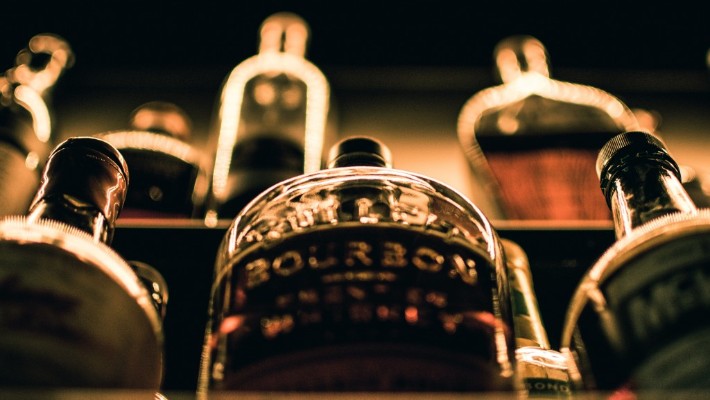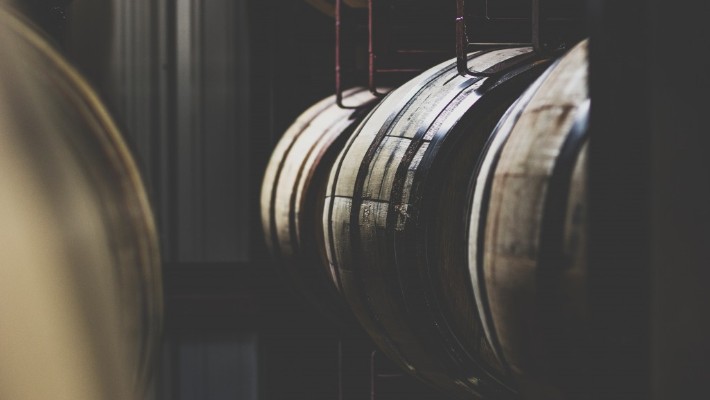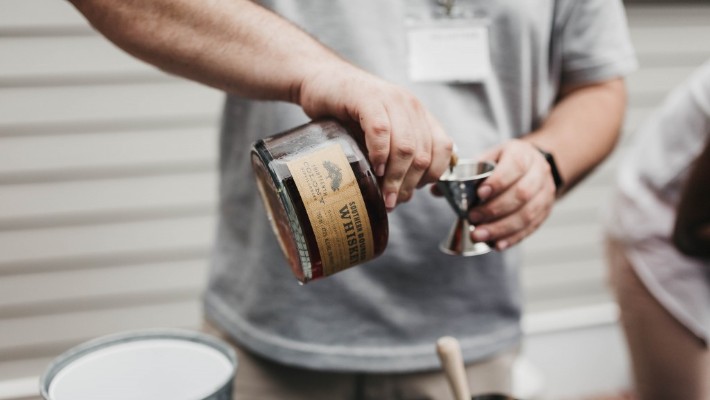Even if you’re only passively into whiskey you’ve likely heard of rye and bourbon. These two styles look pretty much identical and, to some, can end up tasting pretty damn similar too. Truth be told, rye and bourbon are closely connected — especially when we’re talking about the baseline-level expressions. But when you get into the upper registers of craft and expertise, the divide widens.
That gap is what we’re here to parse today. Just a quick note: We’re talking American rye whiskey and not Canadian ryes. (You can read more about the Canadian version here.)
What Is Rye Whiskey?

Rye is an old-school grain for distilling spirits. Rye vodkas are classics of the style and rye cut with other grains was the cornerstone of whiskey development in the Pennsylvania-Maryland corridor in the 1700s. Back in those days, wheat, rye, corn, sorghum, or other cereals or grains were used in various mixtures to make a cheap distillate. Basically, whatever was leftover from the harvest and not saved for bread, cakes, noodles, and so forth was thrown in a mash tank and fermented and then distilled.
Over time, folks started getting a taste for spirits made with higher and higher rye content. Hence, rye was born… in theory. It wasn’t until well into the 19th and 20th centuries that what we know as rye today was refined.
The first step along that road came when barreling rose to prominence. The conversion of sugars from the staves of a barrel into the spirit added color, flavors, and body to the drink. Next, the U.S. government stepped in and set up rules for what makes certain whiskeys unique. That is, according to export and taxation rules, for a bourbon to be called a bourbon it had to meet specific criteria — like having 51 percent corn in its mash bill (the grain recipe for fermentation).
Rye was also assigned certain rules:
- Have a 51 percent rye mash bill.
- Be distilled to no more than 80 percent ABV (160 proof).
- Aged in charred, new American oak.
- It must be aged at least two years to be called “straight” rye.
- It must be barreled at no more than 62.5 percent ABV (125 proof).
That’s what makes a rye whiskey a rye whiskey. But there’s a lot of variation at play. The mash bill for rye can be anywhere from 51 to 100 percent. Within that range, the exact amount of any one grain is clearly going to change the flavor of a drink.
Then you get into barreling. Yes, rye has to be barreled in new American oak for at least two years. But after that, it can be finished in any barrel the distiller sees fit. That, again, can create a massive amount of variation in both taste, texture, and consistency.
What Is Bourbon Whiskey?

Bourbon, which came to be between the hollers of Kentucky, Tennessee, and Virginia, is a very similar beast. In fact, let’s cut to the chase. Bourbon has all the same rules above except for one. Where rye whiskey has to have 51 percent rye as the base of its mash bill, bourbon needs 51 percent corn (or maize) as the base of its mash bill.
Everything else is the same — from the barreling times to the proof levels.
At this point, it’s okay to ask, “what’s the big difference then?” with a bit of an eye roll. These are similar whiskeys with one ingredient exception and were even birthed in very close proximity to one another.
Let’s get into how they’re different.
The Difference

Corn is not rye or vice versa. Rye has a much lower sugar content than corn. While different distillers will use different types of corn for their mash bill, let’s keep this to the basics:
- Rye has about 1 gram of sugar per 100 grams of grain.
- White corn has about three times that and yellow corn has about six times as much sugar per 100 grams.
That’s a significant difference, right?
When you’re starting out any spirit, you start with the fermentation. Grains or cereals (or a mix of several of those things) are put into water and yeast is added. An exact temperature to accommodate those yeasts gorging on the sugars in the grains and cereals is met and — ta-da! — fermentation happens. Yeast eats sugar and gives us alcohol.
Let’s track this: If you’re using an ingredient with six times as much sugar, you’re going to get a very different taste in whatever you’re making. And, that folks, is where rye and bourbon diverge greatly.
Very generally, ryes tend to be both spicier and more fruit-forward. Black pepper, chili peppers, heavy doses of cinnamon and allspice, maybe even some green pepper florals come through with notes of fruit (apples, pears, peaches, cherries, and more). Bourbon, on the other hand, leans more into sweet caramel and subtle vanilla. If there’s an apple note, it’s more a fairground candied apple.
Here’s the rub: since both rye and bourbon only need 51 percent of either rye or corn in their mash bill, that other 49 percent can greatly affect the end result.
For instance, Rittenhouse Rye has a 51 percent rye mash bill with a high-corn content. That makes that particular expression the perfect candidate to get a bourbon lover into rye since there’s a huge overlap in the taste department. Likewise, high-rye bourbons like Basil Hayden’s add a lot of spicy depth to the average bourbon. In short, there’s a lot of possibility for overlap — depending on whatever tinkering the distiller does with their various expressions.
That all being said, each style has a unique baseline. Rye’s are spicy. So if you get a spicy bourbon, it’s clearly due to that whiskey’s mash bill being cut with a high rye content. On the flip side, if you order a rye and there’s a kettle corn or a caramel element, it’s likely a rye cut with some serious corn in that mash bill.
Are the differences huge? Maybe not to the uneducated palate. But for the aficionado or the excited neophyte, there’s enough variation to leave you engaged for years. And — when it comes to whiskey — those tweaks and nuances are all part of the fun.







